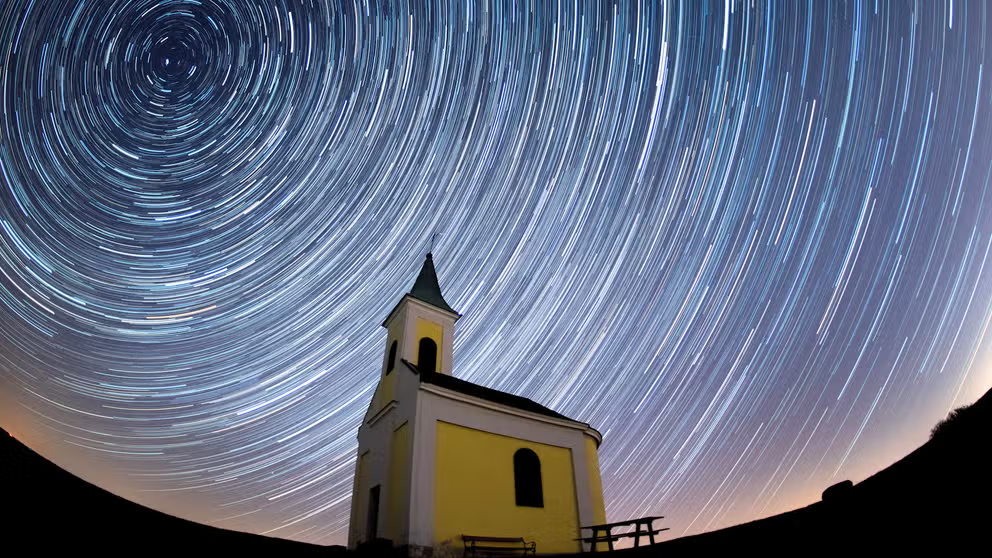Perseid meteor shower: Best places and times to watch for this weekend's show
The moon is cooperating with the peak of this year's peak of the Perseid meteor showers. It will be just a sliver. FOX Weather talked to the experts to find out how to find the fiery streaks in the sky and how many to expect.
Meteor showers explained: what to know and how to watch
We call them shooting stars, but it's actually meteors that create dazzling streaks of light across our night sky.
The best meteor shower in the world, some call it, peaks this week, according to NASA. The Perseid meteor showers are one of the most spectacular, with 50 to 100 "shooting stars" per hour. The max number of meteors will strike the Earth's atmosphere from the evening of August 12 to the morning of August 13.
"It is very rich in bright meteors with the second-best rates," said Bill Cooke of the NASA Meteoroid Environments Office. "Only the Geminids beat the Perseids, but they happen in mid-December, and folks don’t like the cold so much."
And the Moon will cooperate this year, unlike last year. Only 10% of the waning crescent moon will be visible, providing little light to help darken the sky.
"Skywatchers should avoid looking at the Moon, though – messes up night vision," Cooke said.
AUGUST STARGAZING FORECAST: MONTH FEATURES 2 SUPERMOONS, PERSEID METEOR SHOWER
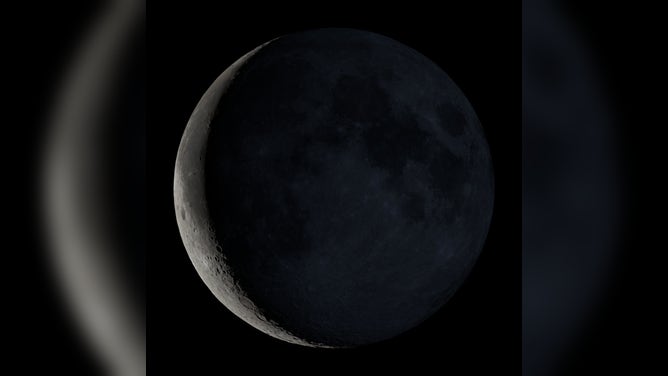
NASA created a simulation of the moon during the early morning of 8/13.
(NASA)
Where and when to look
"Nearly all of the populated world has a chance to see this display if their skies are clear," said Robert Lunsford of the American Meteor Society. "The most favorable locations lie along the northern tropics where the radiant (apparent origin of the shower) rises high in the sky and the length of night is greater than regions further north."
The activity has been ramping up since August 3. Watch for a sharp increase in the celestial show starting August 11. Numbers will decline after the peak, overnight Saturday into Sunday. After August 14, the casual observer won't see the Perseids.
"These meteors can be seen at any time of night, but the highest activity will occur during the morning hours when the constellation of Perseus lies higher in the sky. Perseid meteors appear to shoot forth near the Double Cluster in the constellation of Perseus," explained Lunsford. "The absolute highest number of meteors will be seen during the last hour prior to dawn."
MOON SHOT: 7 TIPS ON HOW TO SHOOT THE MOON… WITH A CAMERA
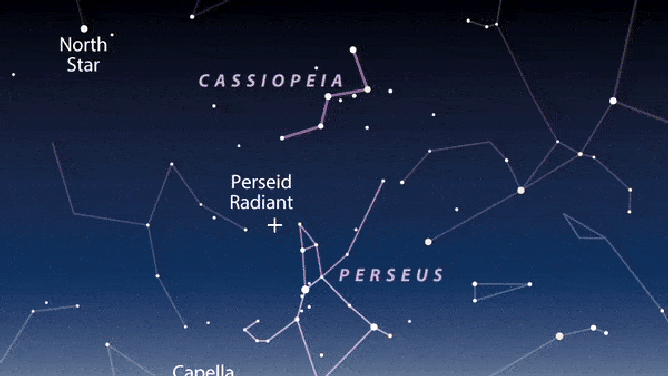
This simulation by skyandtelescope.org shows how to find the radiant and meteors.
(Sky and Telescope / FOX Weather)
The animation from SkyandTelescope.org shows us where to find the radiant.
Of course, to view, get away from lights giving you a better chance of seeing even the faint displays. The last wildcard is the weather and how much the cloud cover will prevent skygazers from seeing. The FOX Weather forecast below provides a percent of the sky covered by clouds during the peak of the activity.

(FOX Weather)
Viewing tips from a NASA pro
- Lie on your back and look away from the Moon. Meteors will appear anywhere in the sky.
- Give your eyes 30–45 minutes to adapt to the dark.
- "Don’t look at your cell phone. Messes up night vision!" ordered Cooke.
"Perseids are also known for their fireballs," explains the NASA Perseid page. "Fireballs are larger explosions of light and color that can persist longer than an average meteor streak. This is due to the fact that fireballs originate from larger particles of cometary material."
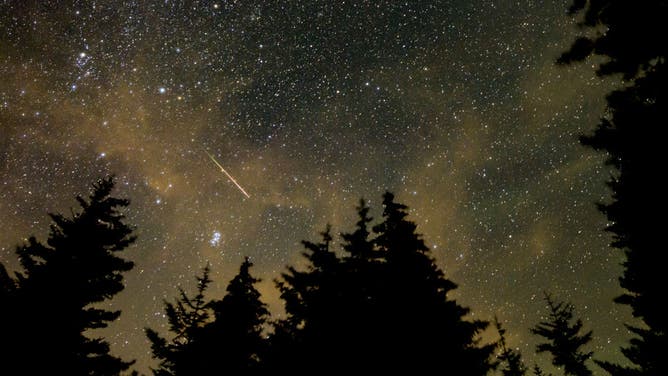
In this 30 second exposure, a meteor streaks across the sky during the annual Perseid meteor shower, Wednesday, Aug. 11, 2021, in Spruce Knob, West Virginia. (Photo by Bill Ingalls/ NASA via Getty Images)
(Getty Images)
How many ‘shooting stars’ will I see?
The shower can produce up to 100 meteors per hour. But, depending on where you are, that is not the case. Scientists corrected estimates and came up with what is called the Zenithal Hourly Rate, assuming no clouds.
Take a look at the three graphics showing the hourly rates we can expect. The first is for very dark skies, away from cities and suburbs. NASA labeled that "Country."
The second is for suburban skies for areas where residents can still see the Big Dipper. The last is titled "What's a star?" for city viewing estimates.
CHECK OUT THESE TOP SUMMER STARGAZING DESTINATIONS
What is a meteor shower?
The Perseids are active from mid-July through August as Earth passes through the dusty and icy debris or tail coming off Comet Swift-Tuttle or Comet 109P. Swift-Tuttle orbits the sun every 133 years. NASA detected the first meteor on July 26 this year.
The large comet is about 16 miles across, according to NASA. The agency adds that Swift-Tuttle is almost twice the size of the object that scientists hypothesized to have created the Gulf of Mexico and wiped out the dinosaurs. Do not fear, NASA wrote; no comets are headed our way.
WATCH OUT FOR THESE ASTRONOMICAL EVENTS IN 2023
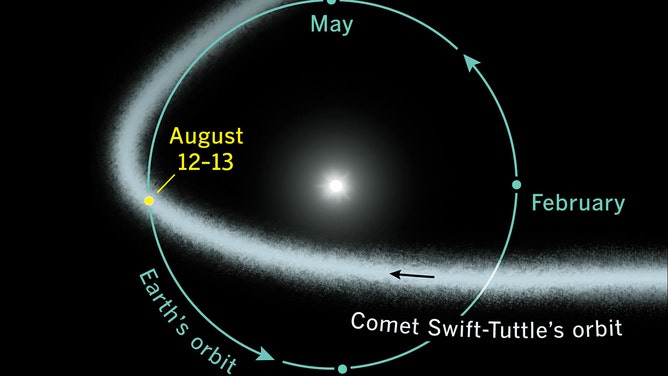
Every year in mid-August, Earth passes collides with particles spread along the orbit of Comet Swift-Tuttle.
(Sky and Telescope / FOX Weather)
Debris ranging from dust to the size of a pea burns up when it hits our comparatively dense atmosphere. The chunks travel around 37 miles per second. And contrary to the ‘shooting stars’ name, there are no stars involved.
